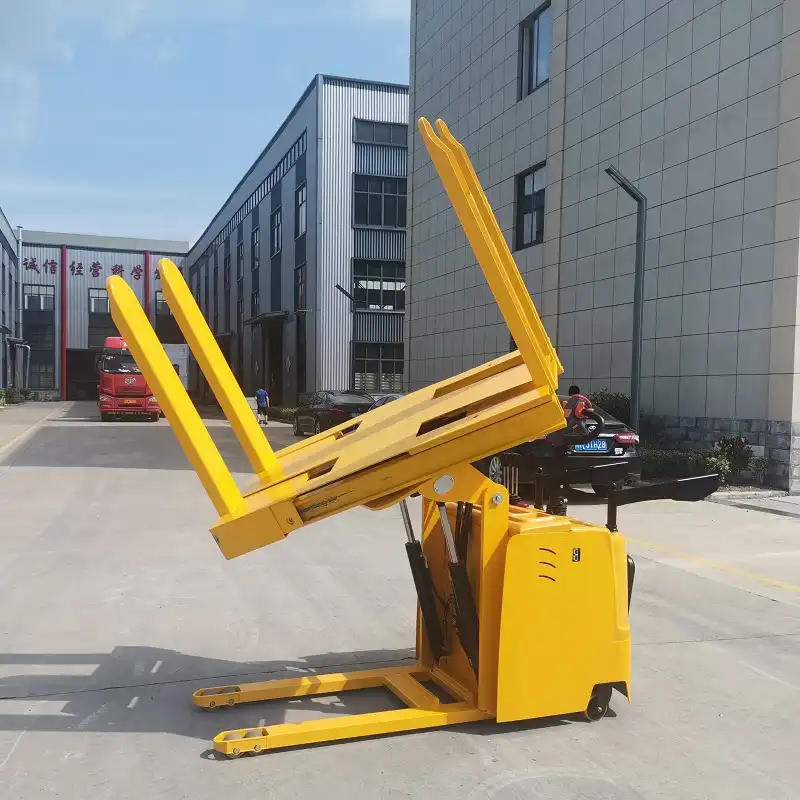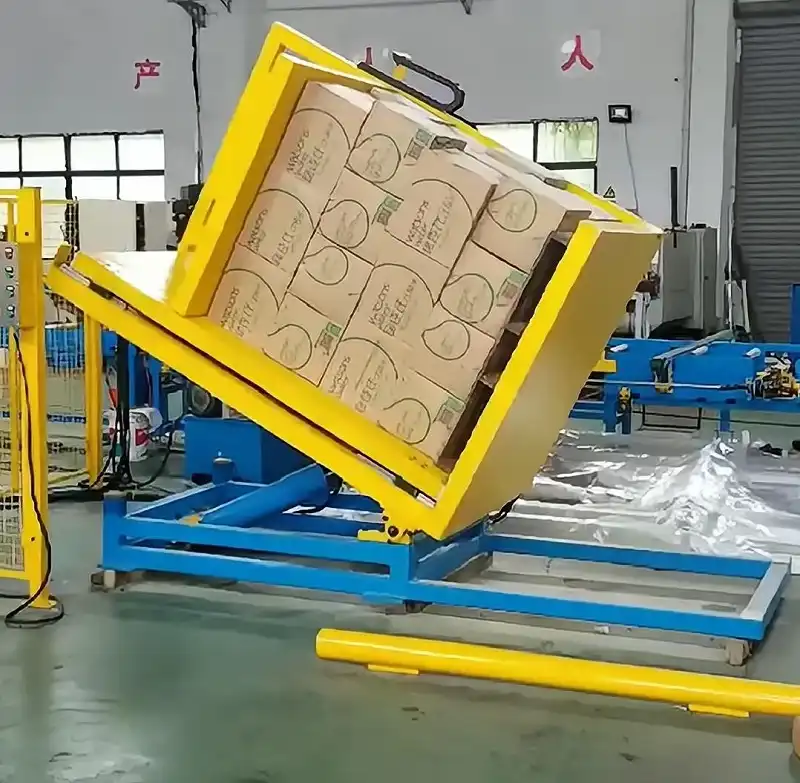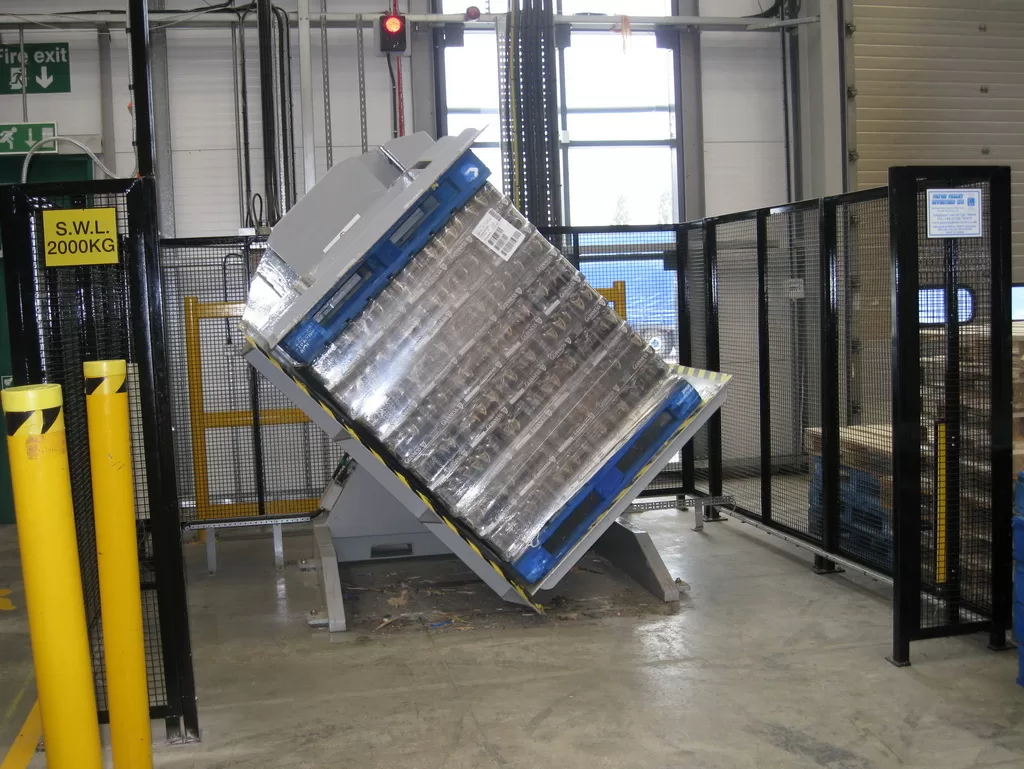Inline Pallet Exchanger
Inline pallet exchangers are revolutionizing the way industries handle palletized goods, streamlining processes, and ensuring maximum efficiency. With their ability to reduce manual labor and enhance workplace safety, these machines have become essential in high-demand logistics environments.
Efficiency isn’t just about speed; it’s about precision and reliability. Inline pallet exchangers offer both, providing solutions tailored to industries where pallet integrity and product stability are critical.
Imagine the difference one machine can make in your supply chain—transforming a labor-intensive process into a seamless operation that saves time, reduces costs, and enhances worker safety. This article explores how inline pallet exchangers work, their benefits, and how to choose the right one for your needs.
[Claim] Inline pallet exchangers redefine operational efficiency by combining automation, safety, and adaptability in material handling systems.

1. Why are inline pallet exchangers essential for modern logistics?
1.1 The growing demand for automation in material handling
In today’s fast-paced industrial landscape, businesses are under constant pressure to deliver faster and more efficiently. Inline pallet exchangers play a pivotal role in meeting these demands by automating the pallet exchange process.
By integrating seamlessly into production and logistics lines, these machines eliminate manual handling, reducing errors and downtime. The result is a more streamlined workflow, ensuring that operations run smoothly even during peak demand.
1.2 Time savings that translate to profitability
Every second counts in logistics. Inline pallet exchangers save time by automating the transfer of goods from one pallet type to another, often completing the process in mere moments.
This rapid pace translates to reduced labor costs and higher throughput, allowing businesses to process more orders without compromising quality or speed.
1.3 From warehouses to distribution centers: Widespread applications
Inline pallet exchangers aren’t confined to a single industry. From pharmaceuticals to food and beverage, their adaptability makes them indispensable across sectors.
Their design accommodates a wide range of products, ensuring compatibility with various pallet sizes and materials. This versatility enhances their value, making them a critical investment for businesses looking to stay ahead in competitive markets.
2. How do inline pallet exchangers improve workplace safety?
2.1 Reducing manual handling risks
Manual pallet handling is not only time-consuming but also hazardous. Workers face risks such as back injuries, repetitive strain, and accidental product damage. Inline pallet exchangers eliminate these risks by automating the process.
Automation ensures consistent and safe handling of heavy or unstable loads, creating a safer working environment for employees.
2.2 Compliance with safety standards
Industries must adhere to strict safety regulations, especially in environments dealing with fragile or hazardous goods. Inline pallet exchangers help businesses stay compliant by offering features such as controlled movements, load stability, and emergency stop mechanisms.
By integrating safety into their design, these machines not only protect employees but also safeguard the goods being handled.
2.3 Long-term benefits for employee well-being
Investing in equipment that reduces physical strain demonstrates a company’s commitment to its workforce. Over time, fewer injuries mean lower healthcare costs, fewer workdays lost, and a happier, healthier team.
With inline pallet exchangers, businesses don’t just enhance efficiency—they create a culture of safety that benefits everyone involved.

3. What factors should you consider when selecting an inline pallet exchanger?
3.1 Understanding your operational needs
Every business has unique requirements, and the first step in selecting an inline pallet exchanger is understanding your specific needs. Are you handling fragile goods? Do you require high-speed operations?
By identifying these factors, you can choose a machine tailored to your workflow. Features like weight capacity, automation level, and compatibility with different pallet types can make all the difference.
3.2 Evaluating machine flexibility and adaptability
In a dynamic industry landscape, flexibility is crucial. Inline pallet exchangers that can adapt to multiple pallet sizes and configurations ensure long-term usability.
Consider exchangers with adjustable settings and customizable features to ensure compatibility with evolving logistics requirements. This adaptability maximizes your return on investment by extending the machine’s functionality over time.
3.3 Comparing cost vs. value
While upfront costs can be a concern, it’s essential to evaluate the overall value an inline pallet exchanger brings to your operations. Beyond purchase price, consider the long-term savings in labor costs, increased efficiency, and reduced product damage.
Investing in a reliable and durable machine ensures fewer breakdowns, minimizing downtime and maintenance expenses. Ultimately, the right exchanger pays for itself by enhancing productivity and reducing operational bottlenecks.
4. How can inline pallet exchangers enhance supply chain sustainability?
4.1 Reducing waste through reusable pallets
Sustainability is becoming a non-negotiable aspect of modern business operations. Inline pallet exchangers enable the use of reusable pallets, minimizing reliance on disposable options that contribute to waste.
By adopting these systems, businesses can align with eco-friendly practices, reducing their environmental impact while maintaining efficiency.
4.2 Lowering energy consumption
Modern inline pallet exchangers are designed with energy efficiency in mind. Features like automated shutdown modes and energy-efficient motors help reduce overall power usage.
This not only lowers operational costs but also supports sustainability goals, creating a win-win scenario for businesses and the environment.
4.3 Supporting a circular supply chain
By facilitating seamless pallet exchanges, these machines promote a circular economy. Reusing and recycling pallets reduces material waste, ensuring a more sustainable supply chain.
Inline pallet exchangers are more than just a tool—they’re a step toward a greener, more responsible approach to logistics and material handling.
[Conclusion]
Inline pallet exchangers are more than a convenience—they’re a necessity for businesses looking to optimize efficiency, safety, and sustainability. These machines empower industries to handle increasing demands, reduce operational risks, and align with eco-conscious practices, all while providing unmatched precision and reliability.
[Claim] Inline pallet exchangers are the cornerstone of modern logistics, bridging the gap between innovation and practicality to deliver unparalleled results.






















